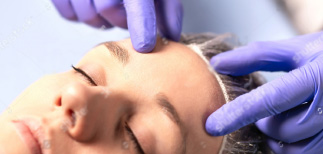Mohs Surgery: A Guide

What is Mohs Surgery?
Mohs surgery, also known as Mohs micrographic surgery, is a specialised procedure used to treat skin cancers, particularly basal cell carcinoma (BCC) and squamous cell carcinoma (SCC). It is a precise technique where thin layers of cancer-containing skin are progressively removed and examined under a microscope until only cancer-free tissue remains. This ensures complete removal of the cancer while preserving as much healthy skin as possible.
Advantages Compared to Conventional Surgery:
- Higher Cure Rate – Mohs surgery has a success rate of up to 99% for certain skin cancers, making it the most effective treatment for non-melanoma skin cancer.
- Tissue Preservation – Because layers are removed gradually, more healthy skin is retained compared to conventional excision.
- Immediate Analysis – The excised tissue is examined on-site, reducing the risk of cancerous cells being left behind.
- Minimised Scarring – By removing only the necessary tissue, Mohs surgery can result in better cosmetic outcomes.
- Outpatient Procedure – It is usually performed under local anaesthetic in a clinical setting, avoiding hospitalisation.
Procedure Details:
- Local Anaesthesia – The treatment area is numbed to ensure patient comfort.
- Layer-by-Layer Removal – The surgeon removes a thin layer of skin and examines it under a microscope.
- Tissue Analysis – If cancer cells are found at the edges, further layers are removed from the affected areas.
- Wound Closure – Once the cancer is fully removed, the wound may be left to heal naturally, sutured, or reconstructed using skin grafts or flaps.
What to Expect on the Day of Mohs Surgery:
- The procedure may take several hours, depending on how many layers need to be removed.
- Bring something to keep yourself occupied (e.g. a book or music), as waiting for tissue analysis can take time.
- Dress comfortably, and avoid wearing makeup or skincare products on the treated area.
- A friend or family member may accompany you if support is needed.
- There may be some minor bleeding, swelling, or discomfort at the treatment site.
Post-Surgical Wound Care:
- Keep the Area Clean – Wash gently with mild soap and water as advised by your doctor.
- Apply Ointment – Use prescribed antibiotic ointment to prevent infection and aid healing.
- Change Dressings – Follow instructions on how often to replace bandages to keep the wound covered.
- Avoid Strenuous Activities – Minimise movement that could stretch or irritate the wound.
- Monitor for Signs of Infection – Redness, excessive swelling, warmth, or pus may indicate infection and should be reported to your doctor.
- Protect from Sun Exposure – Use sunscreen or protective clothing to prevent scarring and reduce the risk of further skin damage.
- Attend Follow-Up Appointments – Your doctor will assess healing and discuss any further treatment if necessary.
Prepared by Dr Sega-Hall
BOOK A CONSULTATION
To book an appointment or to request more information please fill out the form below and we will be in touch shortly. Any information that you provide will remain strictly confidential.